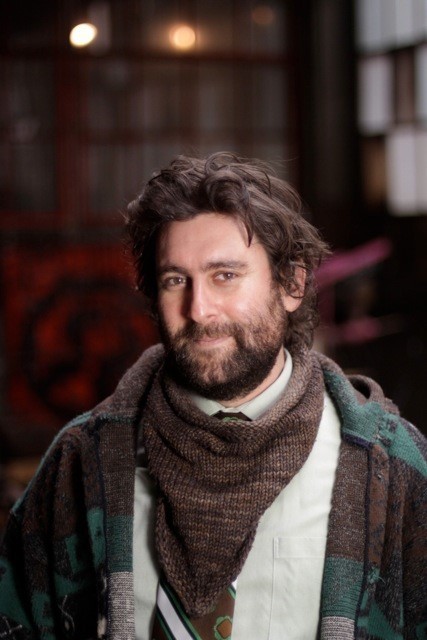The Steel Yard, an industrial arts nonprofit based in Providence, recently announced it would hire KITE Architects to design plans for the restoration and renovation of its 12,000-square-foot studios. In responses to the Providence Business News, Steel Yard Executive Director Howie Sneider elaborated on the plans.
PBN: For those readers who are unaware, tell us about the Steel Yard. What is it and who is it?
SNEIDER: The Steel Yard is an award-winning industrial arts center and Providence’s largest private outdoor venue. Our 3.8-acre campus, located in Providence’s Industrial Valley, is a cultural asset that serves as a sponsor and catalyst for innovative approaches to urban revitalization, arts promotion, workforce development and community growth. Our professional workspace allows for community access to equipment for welding, blacksmithing, jewelry, ceramics and the foundry arts, facilities that have become a vital component in the careers of hundreds of independent craftspeople and entrepreneurs who would not otherwise have the capacity to establish their business or perfect their crafts. Over the last 10 years, the Steel Yard has contributed something distinct to the arts community in Rhode Island by creating shared professional workspace, a venue for the advancement of new sculptural mediums and a broader definition of public art. Tens of thousands of people interact with the Steel Yard’s public art installations every day and over 500 people will participate in educational programs at our Olneyville studios this year.
PBN: The historical studios will receive an upgrade as well as a renovation through this project. What are you hoping will come out of it?
SNEIDER: Creative revitalization is flourishing at the Steel Yard as attendance has increased at events, courses are thriving, and new markets and partnerships are emerging. Our strategic planning has yielded insights into future opportunities including new ways that the greater community can utilize the organization’s resources. Preserving the historic character of the site while assuring the safety of the growing number of site users is crucial as we experience increased usage of our campus during all hours of the day. The anticipated scope of work for architectural and mechanical design will address upgrades to the outdated electrical system, the addition of heat, and the renovation of the facility for full ADA accessibility. The Steel Yard’s studio buildings, constructed between 1902 and 1939, need capital improvements to allow for year-round use of the indoor spaces. Weatherization has been completed over the last two years with the support of the Champlin Foundations, the 1772 Foundation and the Providence Redevelopment Agency, but full historic restoration and final repairs are not yet finished. These planned facility improvements are intended to increase opportunities for all of our programs.
PBN: What are some of the most popular programs that you hope will be extended year-round through this?
SNEIDER: Although our administrative offices are open year-round, our industrial arts studios shut down for approximately four months per year due to lack of heat. Weatherizing the studios will increase the working hours of the facility, so that we can add a new season for educational courses (that includes jewelry, blacksmithing, welding and ceramics), provide winter residencies and job training programs year-round, and attract and retain public art projects during the winter months. Increased operations will also support local independent artists from throughout the region as our hired instructors.
PBN: What about KITE made it a good fit for this renovation project?
SNEIDER: Our request for proposal specifically cited experience in historic preservation. We were also seeking an MBE/WBE (Minority Business Enterprise/Woman Business Enterprise) certified firm. KITE’s preservation and rehabilitation award-winning work was certainly a factor, along with their long history of working with local artists and fabricators to bring a unique feel to their projects. Their enthusiasm for and knowledge of the Steel Yard was also a winning element. Over the years they have integrated some of our own work into their architectural projects and many of their architects have taken workshops and classes here; they understand the value of this organization to the community.
PBN: When will the work be completed and any estimate of how many more visitors might benefit through year-round programs?
SNEIDER: The architectural and mechanical plans will be wrapped up by October of this year. Following that, we’ll be working to raise funds in order to implement these plans, which will be phased in according to the availability of funding. Once completed, we’ll be able to accommodate 30 additional classes in our studios, which translates to about 200 people in open enrollment courses (blacksmithing, jewelry, welding and ceramics), and most significantly our Weld to Work job training program for underserved residents. Together with site and venue improvements, this project will serve over 10,000 visitors annually, and will provide them with completely unique, informative and inspirational industrial arts programming.
No posts to display
Sign in
Welcome! Log into your account
Forgot your password? Get help
Privacy Policy
Password recovery
Recover your password
A password will be e-mailed to you.












